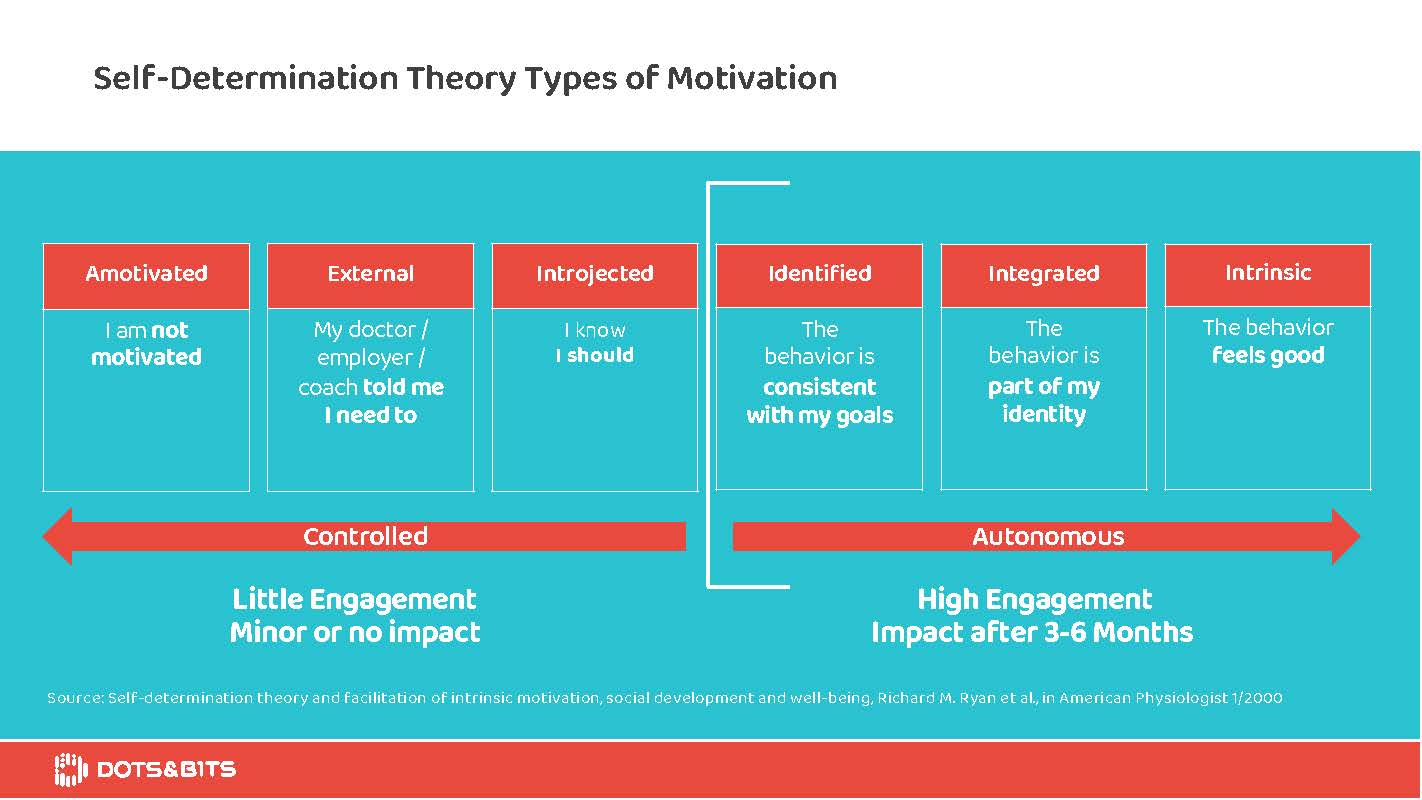Technology is always a challenge, in particular when it comes to digital health solutions. Ease of use requirements of target customers or patients, data privacy concerns & platform security, health-tech integration, quality assurance and service certification - to name only a few - make digital health solutions harder to build than your average app. But the real challenge lies with user engagement.
The problem of most apps is to engage and retain users:
- On average, the percentage of users who abandon an app already after one session is around 25%
- The percentage of users who return to an app more than 10 times is only around 35%
- Only 29% of initial users return to an app at least 1x within 30 days after 90 days
Source Localytics: 2019 and Localytics 2018
With health apps the situation is even more severe: sustained engagement is a key metric in determining whether a health app or health intervention has the potential of delivering a clinical benefit. Meanwhile, poor engagement among users is a long-standing concern for most health apps.
What lessons can we learn from the first wave of health apps? Providing tools for life-logging is certainly not sufficient to drive engagement. The average user gets bored quickly and tends to loose interest already after one week of usage. External incentives or gamification - even if done well - might keep users engaged a little longer but not on an ongoing basis.
Self-Determination Theory (SDT), a well known and heavily studied approach to human motivation and personality, sheds more light on the problem of user engagement (Ryan et al.).
In essence, digital healthcare providers need to create services which change a users attitude towards intrinsic motivation, i.e. the feeling of being personally rewarded by using the service as opposed to expecting to get something in return or avoiding something unpleasant.

Thus, next generation health apps should align content and program strategies more closely with SDT principles in order to create lasting impact through a more compelling and personalized experience.
Talk to us at dots&bits to find out more.
Source: dots&bits










